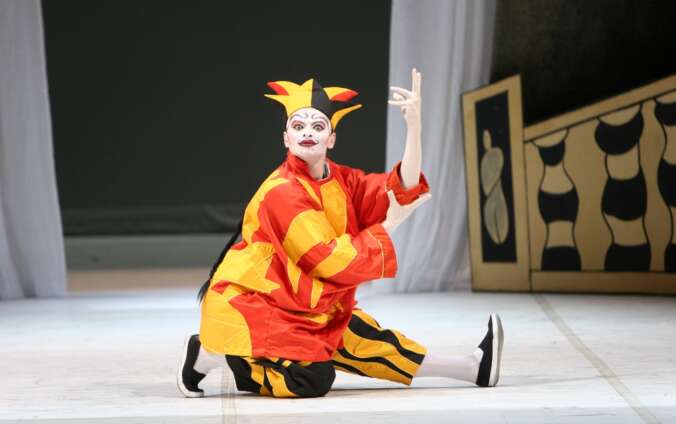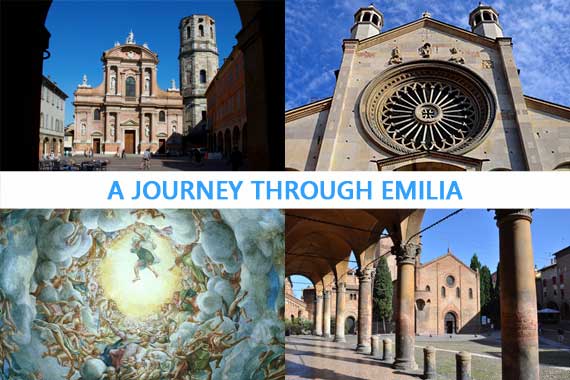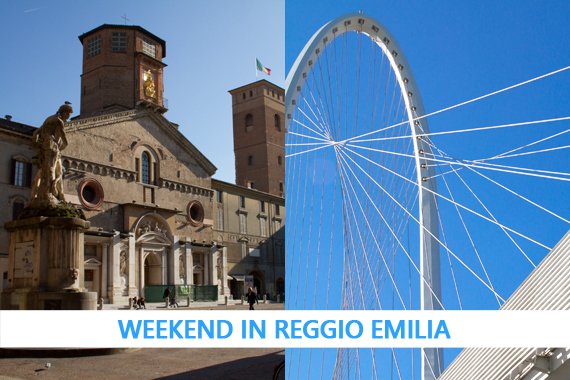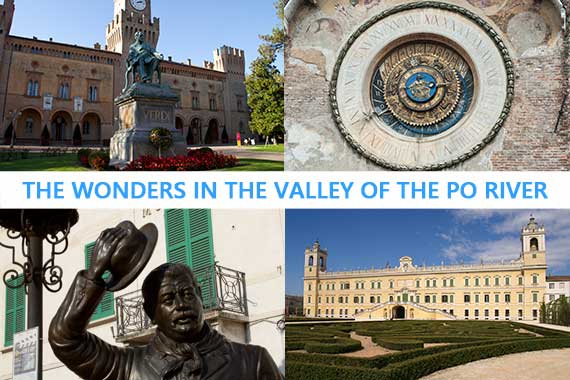After the death of Matilda da Canossa and the experience of the Commune of Reggio, the territory was divided into different counties ruled by independent powerful families. At the beginning of the 15th century though, the district of Reggio was occupied by the Este Family and many of the lords, especially the Boiardi and the Da Correggio, married into the great family from Ferrara. The rule of the noble dynasty brought along the freshness of Renaissance and the arts flourished in all the district, thanks to artists such as Matteo Maria Boiardo, Ludovico Ariosto, “Correggio” and the artistic workshop created at the worksite for the building of Madonna della Ghiara sanctuary.

The Este family ruled until the Unity of Italy but not in a continuative way: in 1797 – inspired by the climate of change brought by the Napoleonic cyclone – the deputies of Modena, Bologna, Ferrara and Reggio gathered in the city town hall, outlined the constitution of the recently declared Cispadane Republic and choose the flag: green, white, red stripes, the Tricolore was born, destined to become the flag of Italy.
After the defeat of Napoleon, the Congress of Vienna stated the end of Reggio’s freedom and the restitution of the city to the Este family but, just when the railway arrived 44 years later, the Austro-Este governors were chased away for good and Reggio was annexed to the Italian Reign, soon to be unified into the actual shape in 1861.
The freshness of the Renaissance came along with the Este: an exceptional cultural circuit came into begin and soon the district was full of the marvelous creations of the artists awaken by the cultural renovation triggered by the lords of Ferrara. The achievements in arts were really high: Antonio Casotti distinguished himself in the architectural field while the poet Matteo Maria Boiardo wrote the poem of chivalry and romance Orlando Innamorato, a subject soon carried on by the great poet Ludovico Ariosto with his Orlando Furioso. Furthermore, it must not be forgotten that the universal painting genius Antonio Allegri (better known as “Correggio”) was born in Reggio Emilia.
With the foundation of the Santo Monte di Pietà and the introduction of the silk manufacturing at the beginning of 1500, the life in Reggio Emilia improved considerably, and its inhabitants begun to call for a wide-ranging renewal: the great urban-developer Biagio Rossetti worked in Reggio and so did Bartolomeo Spani, applying the humanistic fabric of the golden section to the city’s cloisters and villas.
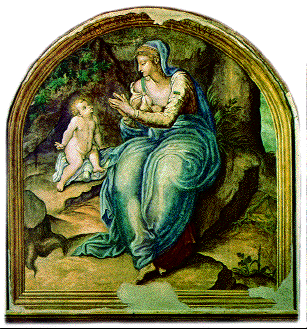
At the end of the century, a miracle took place in Reggio granted by the “Madonna della Ghiara” and of course the building of a new, great church was needed to celebrate the miracle and to properly welcome the pilgrims. In just a few years, a magnificent sanctuary was built, and in its worksite hosted the largest pictorial workshop of 17th century in Emilia: paintings by Ludovico and Annibale Carracci, Guido Reni, Guercino, Palma theYounger and Alessandro Tiarini. Unfortunately, Reggio and its province emerged stripped bare of its masterpieces of paintings from the “ancien régime”, mainly because of the Este family and Napoleon indiscriminate deprivations.
Anyway, the climate of change brought by the Napoleonic cyclone led to the proclamation first of the Reggio Republic, then of the Cispadane Republic: together with the deputies of Ferrara, Bologna and Modena, the deputy of Reggio gathered into the Sala del Municipio on the 7th January 1797, to outline the constitution and to choose the flag: green, white, red stripes, the Tricolore was born, destined to become the flag of Italy.
Napoleon was indeed defeated, and the Congress of Vienna of 1815 stated the end of Reggio’s freedom and the restitution of the city to the Este family but, just when the railway arrived 44 years later, the Austro-Este governors were chased away for good and Reggio was annexed to the Italian Reign, soon to be unified into the actual shape in 1861.


